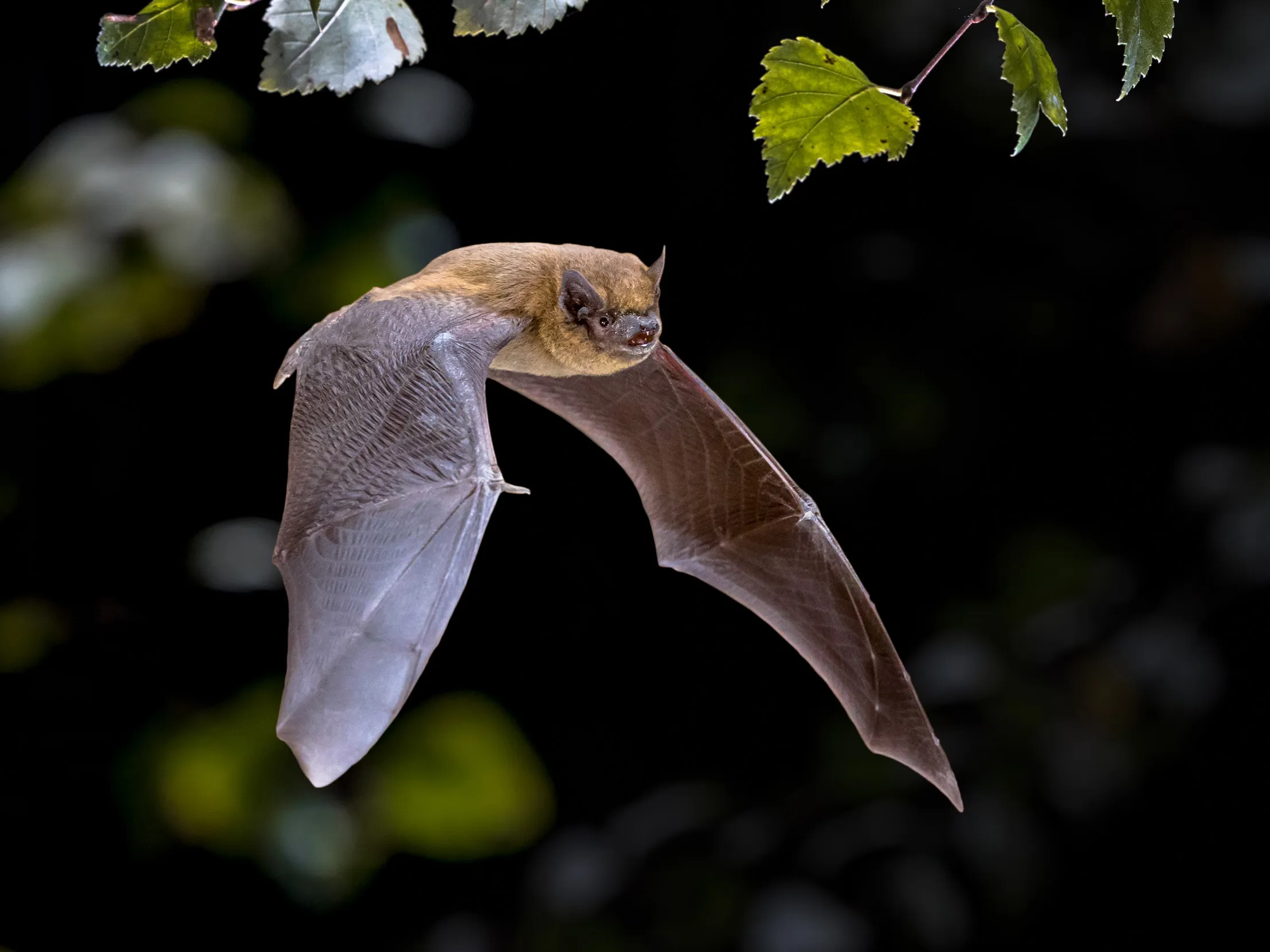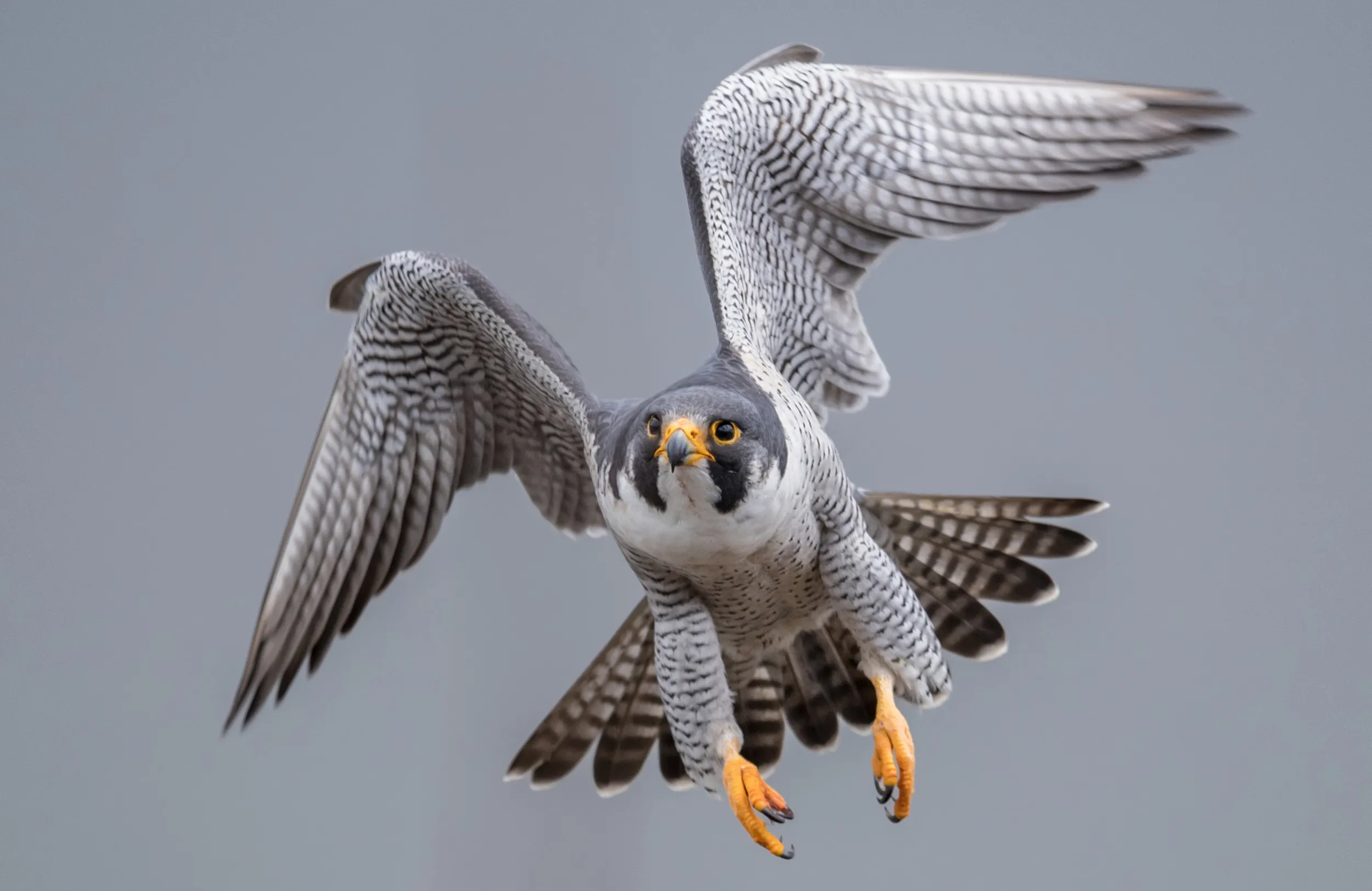Advice
Meet some remarkable winter raptors
Get to know birds of prey with our guide to what you could see in winter.
This month, nature’s special places are buzzing and blooming with noise and colour. From wildflower meadows swaying with bees and butterflies to riverbanks dancing with damselflies and dragonflies, it’s time to discover July’s treasures.

July is a good month to look out for moths, as many are now on the wing. While most moth species are nocturnal and so fly at night, there are plenty of day-flying moths to look out for. In fact, here in the UK there are actually more day-flying moths than there are butterflies.
One colourful species that is found throughout most of the UK is the Cinnabar moth, so named for the red on their hindwings and markings on their forewings. Their black and yellow caterpillars are often found munching their way through Common Ragwort. Head to grasslands and heathlands to look for them. Another red and black moth found in grasslands is the Six-spot Burnet. You can identify it by counting the six spots on each forewing – but be warned, sometimes the outmost spots can merge together.

Plantlife’s National Meadows Day is celebrated on Saturday 6 July and it’s a reminder that meadows are now at their midsummer best. Under the summer sun a wildflower meadow blooms and buzzes with life as flowers blossom and insects flit from plant to plant. One plant to look out for and a favourite with bees and butterflies is Common Knapweed. Although these purple-headed plants may look like thistles, they are not prickly.
Also look out for Common Spotted Orchids. This is the UK’s most common orchid and found in many different habitats including grasslands, woodlands and marshes. Look for their towering spikes of pink flowers and spotty green leaves. Day-flying moths are often attracted to their highly perfumed flowers.

Dragonflies and damselflies are out in force in July and wherever you find freshwater you could be rewarded with the magical sight of shimmering wings and fast flight. As Visitor Experience Officer for RSPB Old Moor Kylie Swart explains: “The ponds here literally become alive with the joy of dancing, shining wings in the sun!”
One dragonfly you’re unlikely to miss is the Emperor. This is the UK’s bulkiest dragonfly with adults flying in at around 8cm long. The males are largely blue with a green thorax (the part behind the head). They also have a long black stripe running along the top of their abdomen (the long bit). Females are greenish all over, but with a similar long black stripe on the abdomen.
A more delicate-looking creature to see is the Banded Demoiselle. These damselflies reach around 4.5cm and have metallic-like colouring which is blue in males and green in females. Smaller still is the Large Red Damselfly, at just over 3cm. The bright red on their bodies makes them stand out. Males have red abdomens with black markings, particularly towards the tip. Females vary in colour, but are mostly red or brown. Particularly pretty are the females with red abdomens ‘segmented’ with black and yellow stripes.
Different species of dragonfly and damselfly favour different habitats, and what you see will vary depending on where you are. Banded Demoiselles, for example, favour rivers, while Large Red Damselflies prefer bogs, ditches and ponds. Banded Demoiselles were also absent from Scotland until 2002 but their range is now steadily expanding.

With their striking good looks and skilful fishing techniques, Kingfishers are one of the much-loved lords and ladies of our wetlands. They can be seen all year round near rivers, canals and wetlands, and pretty much anywhere in the UK apart from northern Scotland. But despite their dazzling blue and copper feathers, Kingfishers can be shy and difficult to see. One way to catch a glimpse of a Kingfisher to be alert to their high-pitched piping call whenever you are near water. Kingfishers dart along rivers and streams at speed often calling as they go.

The long, warm summer evenings are an ideal time to look for bats. Two of the most common in the UK are the Common Pipistrelle and Soprano Pipistrelle. Once thought to be the same species, these can be told apart by the frequency at which they call, with Sopranos being the higher pitched of the pair – although you will need a bat detector to determine this. Watch for bats around sunset, as it is around this time that they emerge from their roosts in search of flies and other insects to eat. Both are often seen near rivers or ponds, where insects are found in abundance.

Head to a Peregrine watch point this month and you could see this year’s chicks honing their new skills. Peregrines can be found nesting in many of our towns and cities, high up on the inaccessible and undisturbed ledges of cathedrals, towers and other high structures. Around this time of year, the young fledge and it’s now time for the young birds to learn how to catch their own food. Peregrine Falcons are the fastest creatures on the planet, dive-bombing to catch their prey at speeds in excess of 200mph. This technique of swooping down at speed means that to avoid injury or impact with the ground, the birds must catch their food while mid-air.

Newport Wetlands: Newport Wetlands is a vibrant and exciting place with a blend of wetlands, reedbeds and estuary habitats rich in wildlife, including 20 different species of dragonfly and damselfly. Join us as we celebrate Newport Wetlands’ designation as a Dragonfly Hotspot for our Discovering dragonflies event.
Conwy: Adventures await at this wildlife-rich nature reserve. Stroll through mixed scrub and grassland, dotted with temporary pools – loved by dragonflies and butterflies – and colourful with orchids in summer. In July 2024 Conwy will be designated as a Dragonfly Hotspot, in recognition of of 18 species of dragonfly and damselfly found here.

Montiaghs Moss, County Antrim: Listen as the hum of busy dragonflies and damselflies fill the air at this mosaic of peaceful pools and swaying heather. Keep an eye out for the Irish Damselfly, which can be seen perched on waterside vegetation.
Insh Marshes, Highland: Take a wander through this Highland nature reserve with stunning views over endless pools and marshes rich with insect and bird life. You can also join us for a Wildflower walk to mark National Meadows Day.
Loch Lomond, West Dunbartonshire: This reserve is set in a stunning mix of woodlands, grasslands and wetlands on the bonnie banks of Loch Lomond and is a great place for wildlife. Sign up for our Wildflower Wander to delve into the world of wildflowers in the meadows and woodlands of RSPB Scotland Loch Lomond.

Ham Wall, Somerset: Step into this paradise for wetland birds and discover Great White Egrets and brightly coloured Kingfishers. Or join us for a Butterfly, dragonfly and damselfly guided walk.
Saltholme, Teeside: Discover a wildlife oasis, with wildflower meadows, bird-rich pools and lakes, and whispering grasslands to explore. To find out more about the many dragonflies found here, join us for our July Dragonfly Walk or our August Dragonfly Walk (rspb.org.uk).
Dearne Valley – Old Moor, Yorkshire: Wander through mesmerising wetland habitats, with plenty of opportunities to look out for Kingfishers, discover ponds busy with dragonflies and damselflies, and spot beautiful wild orchids.